Spicing up Christmas.
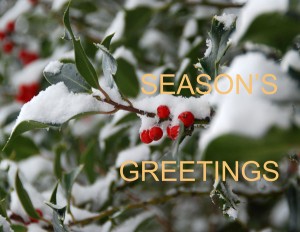
What do nutmeg, allspice, vanilla, cinnamon, anise, cloves, ginger, and cardamom generally have in common ? Broadly speaking, they are spices that we associate with Christmas. They are much used in cakes, christmas puddings, mince pies, mulled wine, and punch. They add nuance and flavour to eating and drinking at this time of year. Whilst spices are parts of plants, ‘spices’ is not a strict botanical term, more a culinary one. Spices come from a variety of plant sources, ranging from woody shrubs and trees, to the roots, flowers, seeds and fruits of herbaceous plants.
Spices are generally dried plant products, whereas other flavourings notably herbs are used in their fresh state. Spices and herbs offer sensations such as pungency, hotness, freshness as well as feelings of temperature or even 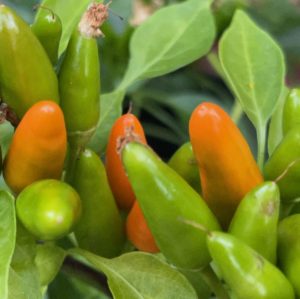 pain (think of a very hot chilli pepper or curry). Apart from the fact that people across the world enjoy the taste of various spices, various hypotheses have been put forward to explain the use of spices (for example, the Darwinian gastronomy hypothesis).
pain (think of a very hot chilli pepper or curry). Apart from the fact that people across the world enjoy the taste of various spices, various hypotheses have been put forward to explain the use of spices (for example, the Darwinian gastronomy hypothesis).
Nowadays, spices are regarded as familiar or commonplace but in the past they were exotic and expensive (as was tea, which was kept under lock and key away from the servants). Spices ‘unlocked’ fortunes for those who ‘discovered’ and transported them from far flung places (such as the Dutch East Indies, the source of nutmeg, cinnamon and black peppercorns).
The original source of Nutmeg was the Banda Islands of Indonesia (sugar cane also originated in this area). The Portuguese and the Dutch fought for control of the islands. The Dutch East India Company was established in the early 1600’s and operated from Jayakarta for best the best part of 200 years. 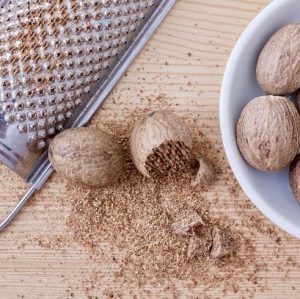 Britain briefly occupied the islands and nutmeg trees were sent to Singapore, Malaysia and Sri Lanka, and then on to Zanzibar, Grenada and the Indian state of Kerala.
Britain briefly occupied the islands and nutmeg trees were sent to Singapore, Malaysia and Sri Lanka, and then on to Zanzibar, Grenada and the Indian state of Kerala.
As the tree’s (Myristica fragrans) homeland is tropical, it cannot tolerate frost but it is now widely grown throughout Indonesia, India and Guatemala. Between them, these countries produce some 85% of the nutmeg harvest each year. Nutmeg trees are dioecious, that is, there are separate male and female trees. Young trees begin to produce fruit when they are a few years old but it not possible to determine which trees are male and which are female until then. Obviously only female trees will produce nutmegs. Peak production of the fruit occurs when the trees are about twenty years old and productivity falls after some 60 years.
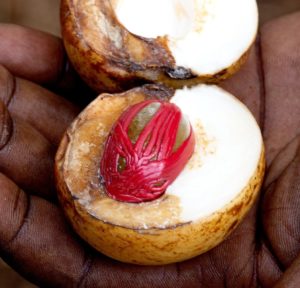 The fruit is termed [botanically] a drupe. That is a fruit in which an outer fleshy part (the skin and flesh) surrounds a single shell (the pit, stone) with a seed (or kernel) inside. The fleshy covering of the nutmeg is sweet and in Indonesian culture may be used to make a jam, juice or dessert. Beneath the flesh / pulp is a crimson tissue. This is peeled away, dried and grated to form the spice - MACE.
The fruit is termed [botanically] a drupe. That is a fruit in which an outer fleshy part (the skin and flesh) surrounds a single shell (the pit, stone) with a seed (or kernel) inside. The fleshy covering of the nutmeg is sweet and in Indonesian culture may be used to make a jam, juice or dessert. Beneath the flesh / pulp is a crimson tissue. This is peeled away, dried and grated to form the spice - MACE.
The seed is dried in the sun, the flesh extracted and ground to make the commercial form of NUTMEG, though it can be grated. Whilst mace and nutmeg are similar in flavour, mace is sometimes described as having a more subtle taste and a bright orange colour. Nutmeg has a warm, slightly sweet taste; it can be used to flavour baked goods, puddings, potatoes, meats, sauces,, and such drinks such as eggnog (though cinnamon may be used as an alternative ingredient), mulled wine and chai tea.
Interestingly, too much nutmeg can have neurological effects (convulsions, delirium, headaches). Whilst the chemicals in nutmeg (and other spices) add flavour to our foods and drink, they are actually part of the plant’s defence mechanisms. They deter insects and other animals from eating / attacking the plant, and may have anti-microbial properties. Nutmeg contains a compound called myristicin - it protects the seed against attack. However, in the body this can be converted into the chemical MMDA, an amphetamine derivative, The effect(s) of consuming large amounts of nutmeg can take some hours to develop and may persist for some time. The levels recommended for use in cooking etc are generally quite safe. Most recipes use between 1/4 to 1/2 teaspoon of nutmeg, and these recipes are then often split into several portions, so the actual exposure to nutmeg (and myristicin) is small. Incidentally, nutmeg was once thought of as a treatment for the plague!
Nutmeg is one of the ingredients of mixed spice. This is a blend of different sweet spices. It often contains cinnamon, nutmeg, allspice; sometimes cloves, ginger, coriander (seeds) and caraway may be added. The term "mixed spice" has referred to this blend of spices in cookbooks dating back to the nineteenth century and possibly much earlier.
Allspice is the dried fruit of the plant Pimenta dioica, an evergreen tree / shrub. Early attempts to grow the tree from seed failed until it was found that the seeds needed to pass through the gut of birds - this was the ‘trigger’ for successful germination. The fruits are traditionally dried in the sun, they then resemble peppercorns. At one time, the plant was thought to grow only in Jamaica and it is sometimes referred to as the Jamaica Pepper. Now, it is grown in many warm parts of the world. Whilst allspice is a valued ingredient in Jamaican cooking, e.g. jerk seasoning, it is also used in many other cuisines : middle eastern, Polish, Finnish and Swedish. It is used to flavour stews, soups and meat dishes, but can also be used in various sweet dishes. Allspice is also an ingredient in mixed spice (mentioned above) often used in baking, and in the making of Christmas pudding or a Christmas cake.
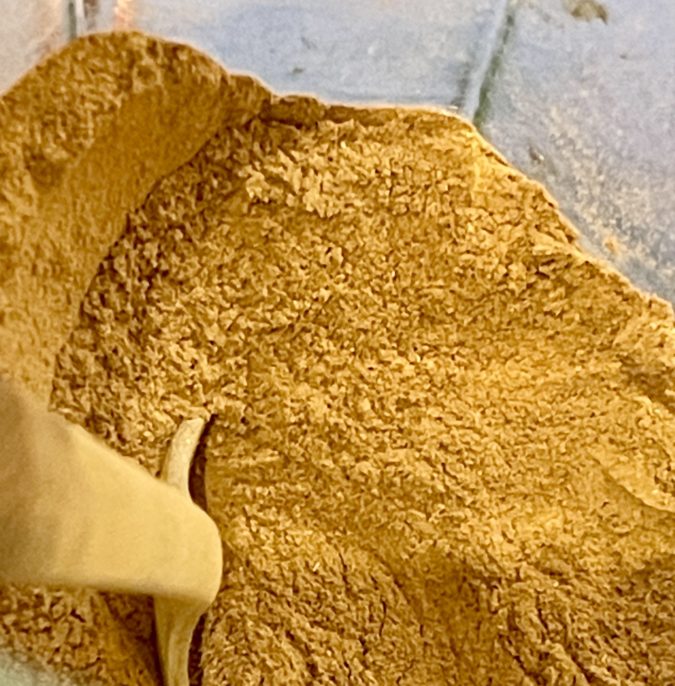
Cinnamon
Historically speaking, another valued spice was cinnamon. It was a suitable gift at the Temple of Apollo (at Miletus). The source of cinnamon was a secret to traders in the Mediterranean world for centuries, they controlled the spice trade in order to protect their profits / monopoly. Cinnamon comes from Cinnamonum trees that belong to the Laurel family. There are many species (see here for a list) but Cinnamomum verum known as "Ceylon cinnamon" is considered to be "true cinnamon”. However, most commercially available cinnamon comes from :-
- C. burmanni - Indonesian cinnamon or Padang cassia),
- C. cassia - Chinese cinnamon or Chinese cassia),
- C. loureiroi -Saigon cinnamon or Vietnamese cassia), and
- C. citriodorum - Malabar cinnamon
The trees are coppiced so that multiple stems are produced and it is from the bark of these stems that the strips of cinnamon are produced.
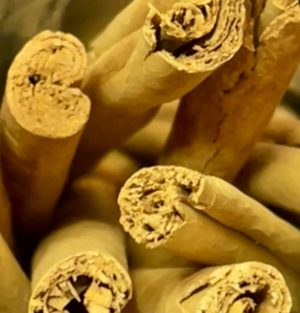
cinnamon quills / sticks
Cinnamon has a strong, spicy flavour. The properties of cinnamon come principally from two chemicals - cinnamaldehyde and eugenol. The cinnamaldehyde is largely responsible for the flavour and aroma of cinnamon. It is known to stimulate particular receptors in the nerve endings in the mouth - the TRP receptors. The eugenol has a pleasant, spicy, clove-like scent. Cinnamon is used in the baking of cinnamon rolls and buns, as it handles baking conditions well. It is commonly used in Sweden, and such is the ‘importance’ of their cinnamon buns - kanelbullar that the Swedes have an official Cinnamon Bun Day - on October 4th! Cinnamon is also widely used in Portuguese, Turkish and Persian Cuisine. Cinnamon is also used in fragrant candles. Thousands of years ago, cinnamon (and pine resin) was used in Egypt as a ‘perfume’ / embalming material in the preparation of dead bodies for mummification. In recent times, cinnamon-rich materials have been investigated for medical uses, particularly in relation to type 2 diabetes and the control of blood sugar levels.
Thanks to pixabay for images of nutmeg .
Comments are closed for this post.
